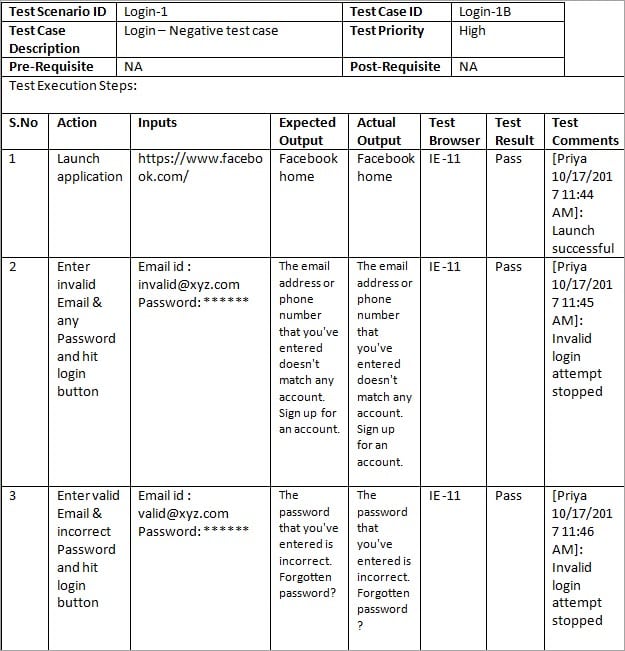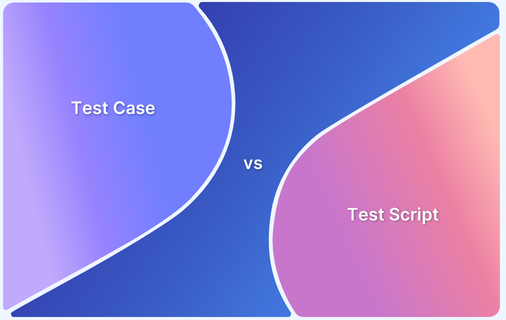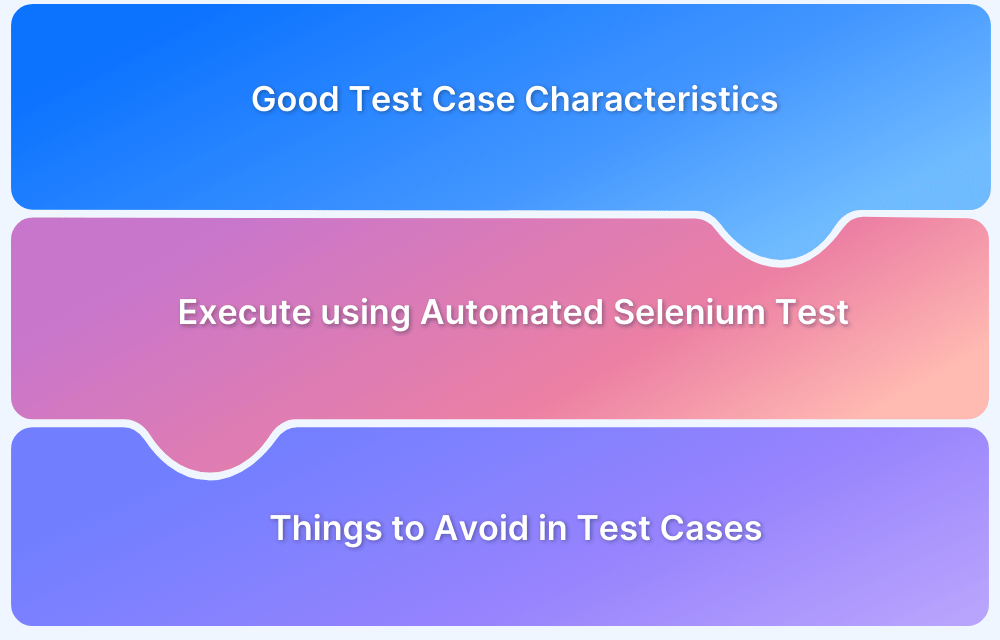In software testing, understanding test suites and test cases is crucial for ensuring comprehensive application validation. Test cases define specific conditions for testing individual components, while test suites group these cases for structured execution.
This article will explore test cases, their creation process, how to organize them into test suites, and the essential elements of test case specifications to ensure thorough testing.
What is a Test Case?
Overview
What is a Test Case?
A test case is a detailed document that outlines a specific scenario to be tested, including input, expected output, and execution steps, to verify a software application’s functionality. It helps ensure the software meets the required specifications.
Use Cases of Test Cases
- Validate individual software functions or features.
- Identify defects and bugs by testing specific scenarios.
- Confirm that software behaves as expected under different conditions.
- Ensure that application requirements are met.
- Provide documentation for future testing and debugging.
Importance of Test Cases
Test cases help ensure precise validation of software functionality, aid in early bug detection, and provide a reference for future tests or regression testing, improving overall software quality and reliability.
It is a sequence of actions necessary to verify a specific functionality or feature of the software. It specifies the prerequisites, post conditions, steps, and data required for feature verification.
The test components contain the input, execution, and expected output that help the QA teams check the feature results and see whether they are working as they should or not. A test case tells the tester what they need to do, in what order and details the outcomes they should expect.
For instance, in a test scenario where you have to check login functionality, one of the test cases can be:
Test Case: Check results when a valid Login Id and Password are entered.
Many more test cases can be created to ensure that every angle is tested for the particular test scenario. Compiling multiple test cases to check the test scenario is called a test suite.
What is a Test Suite?
Overview
What is a Test Suite?
A test suite is a structured collection of test cases grouped logically to execute a single job across various test scenarios, ensuring comprehensive functionality validation. It can include both manual and automated test cases.
Use cases of Test Suite
- Detect defects, bugs, and inconsistencies in the software.
- Assess the quality and reliability of an application.
- Manage, execute, and report test results efficiently.
- Create reusable regression tests for repeated or cross-environment use.
- Validate new features without affecting existing functionality.
- Ensure compliance with specified requirements or standards.
Importance of Test Suite
They enable systematic execution, reusable tests, and consistency across environments while supporting Agile practices through automated testing and detailed reporting.
Test suites are the logical grouping or collection of test cases to run a single job with different test scenarios.
For instance, a test suite for product purchase has multiple test cases, like:
- Test Case 1: Login
- Test Case 2: Adding Products
- Test Case 3: Checkout
- Test Case 4: Logout
A test suite also acts as a container for test cases. It also has multiple stages for specifying the status of the test execution process, like in-progress, active, and completed. It is also known as the validations suite, with detailed information and objectives for different test cases and system configurations required for testing.
Once you create a test plan, test suites are created, which can have multiple test cases.
So, let’s understand a test plan’s micro aspect and how to create a test case.
Test Case Form
You must consider certain standard fields when preparing a test case template. The standard test case format contains:
- Test Case ID
- Test Scenario ID
- Test Case Description
- Test Priority
- Prerequisite
- Postrequisite
- Test Data
- Test Execution Steps
- Expected/Intended Results
- Actual Results
- Test Result – Pass/Fail
And multiple important aspects to simplify the test case.
Source softwaretestinghelp
Using a test case template you can create it real-time and execute your software tests.
How to Create a Test Case?
Creating a test case requires describing the test case and the process to ensure that the tester is aware of the test’s purpose. The test case should also include details related to the testing setup, software version, data points, hardware, OS, security clearance, etc.
Here’s a step-by-step guide:
- Test Case Title: Start by giving the test case a clear and concise title that describes the functionality being tested.
- Test Case ID: Assign a unique identifier to the test case for easy tracking.
- Test Objective: Define the test’s purpose, outlining what you aim to validate or verify. This helps testers understand the expected outcome.
- Preconditions: List any requirements that must be met before the test can be executed, such as user permissions, system settings, or data points.
- Test Data: Include the input data needed for the test, such as usernames, passwords, or specific configuration settings.
- Test Steps: Clearly describe the steps the tester should follow to execute the test. Each action should be simple and precise to avoid ambiguity.
- Expected Results: Define the expected outcome when the test is executed correctly. This helps validate whether the software behaves as intended.
- Postconditions: Mention the system’s state after the test is executed, including data changes or system behavior.
- Environment Setup: Specify the environment details, such as the software version, hardware, operating system, and security clearance required to execute the test.
- Test Execution and Results: Document how the test will be executed, who will execute it, and how the results will be recorded.
Best Practices for Writing Test Cases
Easy-to-execute test cases are considered good test cases. They make the testing process more efficient and time-saving.
Here are some best practices you can follow while writing test cases:
- Be Clear and Concise. A good test case must be simple and assertive in describing the tester’s plan of action. It should also be well organized scenario-wise. Understanding the requirements and functionality will help you identify test scenarios and create great test cases.
- Focus on the End-User: To maintain the quality of the software, you need an end-user perspective. Therefore, it’s important to visualize an end user and map test cases to reflect different aspects of the user journey.
- Create self-cleaning Test Cases: Ensure that the test cases revert the test environment to the pre-test state and don’t leave any remnants in the environment once completed.
Also Read: What is End To End Testing?
Apart from these best practices, ensure that the purpose of the particular test case is clear to follow the step-by-step procedures for completing the test.
You can use a test case specification document to get a clear image of your test approach and achieve efficient test results.
Read More: Test Case Reduction and Techniques to Follow
Importance of Test Case Specification
A test case is a collection of criteria through which the tester validates whether the software is meeting the expectations of the client or not. Whereas the test case specification is a detailed summary of what specific scenarios will be tested and how we can proceed with the test.
- The test case specification is a document describing a detailed summary of what test scenarios will be tested and how they will be tested.
- It specifies the test’s purpose, identifies the required step-by-step procedures, input, and desired output, and outlines the pass/fail criteria for determining acceptance.
There are two primary reasons test cases are specified before they are used:
- The nature of the test case impacts the effectiveness of the test results. Even for a specific criterion, the exact nature of the test cases impacts the testing effectiveness.
- Writing a test case specification that highlights the errors in programs can be great for increasing testing quality.
Test case specifications are used as a document to check the quality of the test case and the testing result. Learn below what the document contains.
Read More: What is Test Case Specification?
What does a Test Case Specification Document contain?
A test case specification document contains multiple elements, like:
- Test Case Objectives: Purpose of the test.
- Test Items: Requirements, designs, and code specifications required to run a particular test case.
- Input Specifications: Description of what is required to execute the test case.
- Output Specifications: Description of the system after the test case is completed.
- Environmental Needs: Description of special environmental needs like system architectures, hardware, software tools, records, files, interfaces, etc.
Apart from these, there are a few elements that you can include while creating a test case specification document.
How to Create a Test Case Specification Document?
A good test case specification document refers to having a test case and scenario ID with detailed expected output and actual output with proper comments.
Here’s a sample case of testing the login functionality of a web application like Facebook.
Source softwaretestinghelp
You can create one test case specification document based on your testing requirements but keep checking the important elements.
Conclusion
Understanding the test case, test suite, and test specification in software testing is highly important to ensure excellent test coverage. But to achieve better testing results, you must run your software tests on real browsers, devices, and OSes. Even if you can’t access an in-house lab, choose a dedicated cloud-based testing platform like BrowserStack for all your automation needs.







